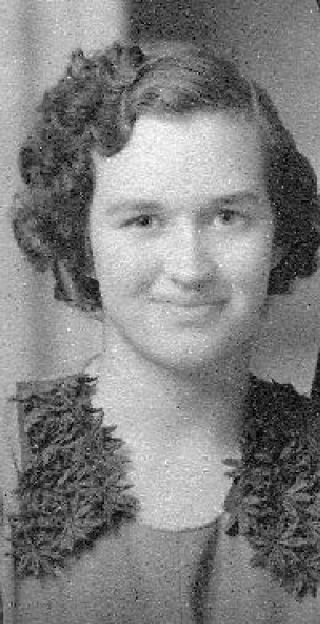“Mom would tell me to write down what I wanted from Santa, throw the list in the stove and run outside to see the smoke going right up to the North Pole. We believed it!”
A tilt of her head, a radiant smile and Lopezian Betty Hastin, continued. “At Easter we put our hats under the bed and, sure enough, the rabbit came and left a bunch of chicken eggs, colored ones. I didn’t have a birthday cake until I was 12. My birthday is December 26 and we had so much fruitcake there was no need to make another cake,” Hastin said.
“My Grandparents Norman were from Norway. Grandfather and his brothers were all carpenters with different last names. They each picked one of their given names and dropped Jorgensen.”
Hastin was born in Mrs. Mead’s birthing home near the village in 1921 to Art and Violet Vogt Norman. “My parents met at a cannery at Richardson. Dad was a fishing boat skipper and mom ran a filling machine. We lived with my grandparents at Mud Bay my first four years. Mom got a job on sailing ships that unloaded fish in Anacortes, then worked at a fish camp in MacKaye Harbor. We lived in the cook house. Mom wanted a little farm so we moved between Aleck Bay and MacKaye Harbor. The house is still there.”
“The fish camp had a bunk house, cook house, carpenter shop, barn, a cow and several sheep, some homes, and buildings where they made fish traps. They’d tie web and dry it on the grass. Fish went into a pot in the web, then into another one and finally into the spiller where the boat would pick up the web and deliver the fish into a scow. Everybody on the island who wanted to could work there. It was a great life. Lots was going on.”
Fish traps were banned by 1934. “Then they started gill netting. MacKaye Harbor would be full of those little boats,” Hastin said.
“I was the oldest in the family, then Art and Ed. Doug was born when I was 11 so I had to help with him. Dad was gone working. I had to learn to milk our four cows.”
“My school at Mud Bay had eight grades. I only knew two other students when I started. High school was in the village. I couldn’t drive and would have to live with someone. Mom said, ‘You’re going to get married so I want you to stay home with me,’ and that’s what I did.”
“When I was 14, there was a Christmas Party at Woodman Hall. Our mothers arranged for Phil, my husband later, and his brother to take me. The stage was like a ship’s deck and we sang Christmas carols. It was really great. Phil and I started going together,” Hastin said.
“My dad used to play the violin and we’d go from house to house in our neighborhood and they’d clean out a bedroom and dance. Phil’s family would go in their horse and buggy all over the island and to stores in Port Stanley, Richardson and the village.”
The Hastins were married in 1939 by William Goodrow. “At our shivaree, Phil gave out cigars and I gave the women hard candy.” It was expected.
Moving to Seattle in 1941, Hastin cared for daughters, Phyllis and Betty Ann, while Phil went north during summer fishing. Employed later in the shipyard, Phil’s position was “frozen” during the war. Eleven-month-old Betty Ann developed a high fever. It was the doctor’s day off and by evening she was having convulsions. The doctor said to go to the police station and ask for an escort to Harborview. “The baby passed away. I was pregnant again. It was horrible. Finally, Sharon was born.”
Back on the Lopez farm in 1946, “We didn’t have much but we were happy. We’d get clams and fish and sometimes a deer. They didn’t pay much attention then. I learned to drive horses, then the tractor and cattle truck. I was like the hired man until we could afford help.”
In 1951, Hastin thought Sharon had appendicitis—others believed the flu. Despite surgery in Anacortes, peritonitis claimed her life. “I cannot to this day accept losing that kid, but life went on.”
“Phil started hauling cattle for people. We built a nice barn so we could ship milk and had pigs and sheep. Then, we had cattle we cut and wrapped for people. They liked our beef. We’d give them grain so they had a little better taste.”
“I was married 67½ years. The best part was our working together. I was alone about two years before I came to Hamlet House. It’s nice here. The people are the main part.”



